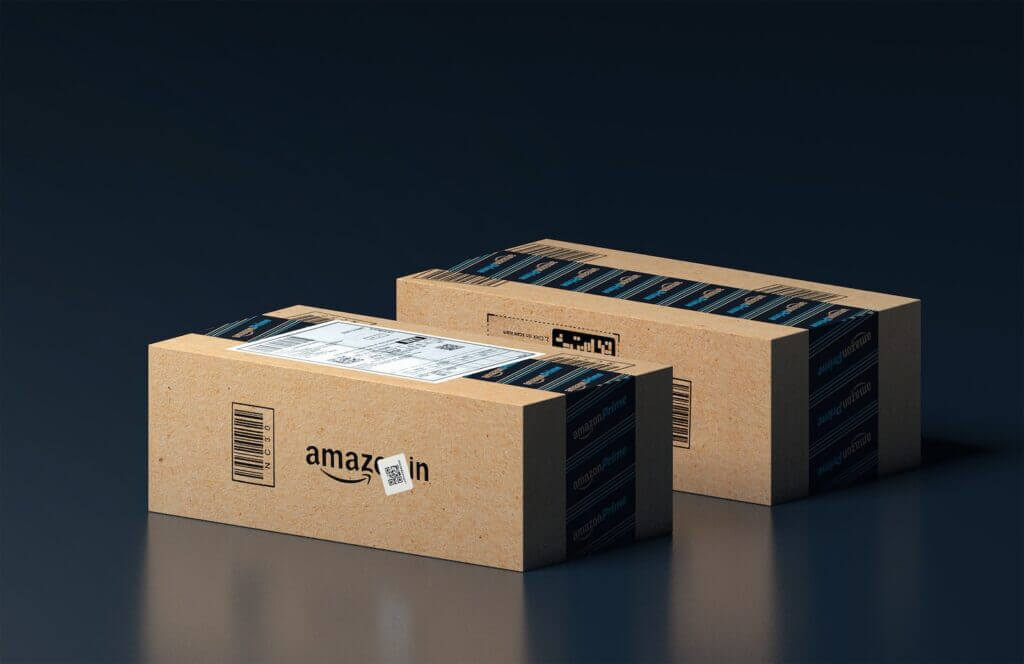Are you curious about what a print ad is and how it can benefit your brand? This comprehensive guide covers everything you need to know about print ads, including their types, characteristics, , and disadvantages. Discover how to create compelling print ads that resonate with your target audience and boost brand awareness.
Definition of a Print Ad
Print advertising is a form of marketing that uses printed materials intended to promote a product, service, or brand. It has been around for centuries and is considered as one of the traditional forms of advertising. Print ads can be seen in magazines, newspapers, brochures, flyers, direct mails, and other printed materials.
Traditional Print Ads
Traditional print ads are those that are printed on physical materials like paper, cardboard, or other tangible materials. They are usually found in newspapers and magazines, and they come in different sizes and formats. Traditional print ads are designed to capture the reader’s attention and convey a message in a brief and concise manner.
Digital Print Ads
Digital print ads, on the other hand, are those that are printed using digital technologies like inkjet or laser printers. They are usually found in digital media like online magazines, websites, and social media platforms. Digital print ads are designed to be interactive and engaging, allowing the reader to click on links, watch videos, and interact with the ad.
When it comes to print advertising, there are two main : traditional print ads and digital print ads. Traditional print ads are the more traditional form of print advertising, and they are usually found in newspapers and magazines. Digital print ads, on the other hand, are the more modern form of print advertising, and they are usually found online. Both types of print ads have their own advantages and disadvantages.
Traditional print ads are more tangible and physical, allowing readers to hold and keep the ad. They also have a longer lifespan compared to digital print ads, as they can be kept for a longer period of time. Traditional print ads also have a wider reach, as newspapers and magazines are often available in public places like airports and coffee shops. However, traditional print ads can be expensive to produce and distribute, and they have a limited audience.
Digital print ads, on the other hand, are more interactive and engaging, allowing readers to click on links, watch videos, and interact with the ad. They also have more targeted reach, as digital ads can be customized to specific demographics and interests. Digital print ads are also easier to track and analyze, as they can provide detailed analytics on how many people viewed and interacted with the ad. However, digital print ads have a shorter lifespan compared to traditional print ads, as they can be easily scrolled past or ignored. They also require a certain level of technical knowledge to design and distribute.
In summary, both traditional print ads and digital print ads have their own unique and disadvantages. When deciding which form of print advertising to use, it is important to consider your target audience, budget, and marketing goals. By understanding the differences between traditional print ads and digital print ads, you can make an informed decision on which form of print advertising is right for your business.
Characteristics of a Print Ad
Print advertising is a popular medium that has been used for many years to promote products, services, and events to a large audience. To create a successful print ad, there are several characteristics that must be considered. In this section, we will explore the visual appeal, clear message, and target audience of print ads.
Visual Appeal
The visual appeal of a print ad is crucial to its success. An ad that is visually appealing will capture the attention of the viewer and effectively communicate the intended message. This can be achieved through the use of bold colors, captivating images, and attention-grabbing fonts.
The layout of the ad should be carefully considered to ensure that it is easy to read and understand. White space can be used to create a clean and simple design that is easy on the eyes. The use of graphics and images can also help to break up text and make the ad more visually appealing.
Clear Message
A clear message is essential in any . The message should be concise and to the point, communicating the intended message effectively. The ad should be able to answer the question, “What is this ad about?” in a matter of seconds.
The headline of the ad is the most important component in communicating the message. It should be catchy and attention-grabbing, encouraging the viewer to read on. The body copy should be concise and provide more detailed information about the product or service being advertised.
Target Audience
The target audience is a crucial component in creating a successful print ad. The ad should be designed to appeal to the specific demographic that is being targeted. This can be achieved through the use of language, imagery, and design elements that are relevant to the target audience.
The ad should be placed in publications or locations where the target audience is likely to see it. For example, an ad for a retirement community would be more effective in a publication aimed at seniors rather than a magazine aimed at young adults.
Types of Print Ads
When it comes to advertising, print ads have been around for a very long time. They are a great way to get your message across to a targeted audience. There are different types of print ads that are used for different purposes. In this section, we will discuss the various of print ads, including magazine ads, newspaper ads, brochures and flyers, and direct mail ads.
Magazine Ads
Magazine ads are a form of print advertising that appears in magazines. These ads are designed to capture the attention of the reader and promote a product or service. Magazine ads are usually full-page or half-page, and they can be either in color or black and white. They are typically placed strategically in magazines that appeal to a specific audience.
One of the advantages of magazine ads is that they allow for a more targeted approach to advertising. Since magazines cater to specific audiences, you can place your ad in a magazine that targets the audience you want to reach. Another advantage is that magazine ads have a longer lifespan compared to other types of print ads. People tend to hold onto magazines longer than newspapers, which means your ad has a longer shelf life.
Newspaper Ads
Newspaper ads are another form of print advertising. They appear in newspapers and are designed to promote a product or service. Newspaper ads come in different sizes and formats, including classified ads, display ads, and inserts.
One of the advantages of newspaper ads is that they have a wide reach. Newspapers are read by a large number of people, which means your ad has the potential to reach a broad audience. Another advantage is that newspaper ads are relatively inexpensive compared to other of print ads.
Brochures and Flyers
Brochures and flyers are print materials used to promote a product or service. They are usually distributed at events, trade shows, and other places where potential customers are likely to be. Brochures and flyers come in different sizes and formats, including trifold, bifold, and single-page designs.
One of the advantages of brochures and flyers is that they are cost-effective. They are cheaper to produce than other types of print ads, and they can be easily distributed. Another advantage is that they provide more information than other types of print ads. Since brochures and flyers have more space, you can include more details about your product or service.
Direct Mail Ads
Direct mail ads are another form of print advertising. They are sent directly to a targeted audience through the mail. Direct mail ads come in different formats, including postcards, letters, and catalogs.
One of the advantages of direct mail ads is that they are highly targeted. Since you are sending your ad directly to a specific audience, you can personalize the message and make it more relevant to the recipient. Another advantage is that direct mail ads have a high response rate. People are more likely to respond to direct mail ads than they are to other types of print ads.
Components of a Print Ad
Print ads are a great way to get your message across to your target audience. But in order to create an effective print ad, you need to understand its components. Here are the four key components of a print ad:
Headline
The headline is the first thing that people see when they look at your print ad. It should be eye-catching and attention-grabbing. Your headline should be short and to the point, conveying the main message of your ad. It should also be relevant to your target audience, so they can quickly understand what your ad is about.
Body Copy
The body copy is the main text of your print ad. It should expand on the message of your headline and provide more information about your product or service. Your body copy should be easy to read and understand, with short sentences and paragraphs. Use bullet points or numbered lists to break up the text and make it more readable.
Call to Action
The call to action is the part of your print ad where you tell your target audience what you want them to do. It should be clear and specific, encouraging them to take action. Whether it’s visiting your website, calling your business, or making a purchase, your call to action should be compelling and easy to understand.
Contact Information
Your contact information is essential for your target audience to get in touch with you. It should be easy to find and read. Include your business name, phone number, email address, and website URL. You may also want to include your physical address if you have a brick-and-mortar location.
In summary, the headline, body copy, call to action, and contact information are the key components of a . By understanding these components and crafting them effectively, you can create a that resonates with your target audience and drives results.
| Component | Description |
|---|---|
| Headline | Eye-catching and attention-grabbing, relevant to target audience |
| Body Copy | Expands on message of headline, easy to read and understand |
| Call to Action | Clear and specific, encourages action |
| Contact Information | Essential for getting in touch with business, easy to find and read |
Advantages of Print Ads
Print advertising is a traditional method of marketing that has been around for centuries. Despite the rise of digital advertising, print ads continue to be a popular choice for businesses. There are several to using print ads to market your products or services. In this section, we will discuss four key advantages of print ads: tangible presence, longer lifespan, targeted reach, and brand awareness.
Tangible Presence
One of the most significant advantages of print ads is the tangible presence they offer. Unlike digital ads, print ads can be physically held, touched, and seen. This physical presence creates a lasting impression on the viewer, making it easier to remember the product or service being advertised.
For example, a brochure or flyer can be picked up and taken home, allowing the viewer to revisit the ad later. Additionally, print ads can be displayed in public spaces, such as bus stops or billboards, where people are likely to see them repeatedly. This repeated exposure can increase brand recognition and lead to more sales.
Longer Lifespan
Another advantage of print ads is their longer lifespan. Digital ads are often fleeting and quickly forgotten. In contrast, print ads can remain on display for weeks, months, or even years. This extended lifespan allows the ad to reach a wider audience over time.
For example, a magazine ad can be kept for months or even years, allowing the viewer to repeatedly see the ad. Additionally, print ads can be repurposed for future use, either by the same company or a different one. This longevity makes print advertising a cost-effective solution for businesses looking to reach a broad audience over an extended period.
Targeted Reach
Print ads can also be used to reach a targeted audience. For example, a business can place an ad in a specialized magazine that caters to a specific demographic. This targeted approach allows the business to reach their ideal audience and increase the chances of conversion.
Additionally, print ads can be placed in specific geographic locations, further increasing their effectiveness. For example, a business can place an ad in a local newspaper or on a billboard in a specific area. This approach allows the business to reach potential customers who are more likely to use their product or service.
Brand Awareness
Finally, print ads can be used to increase brand awareness. A well-designed print ad can create a lasting impression on the viewer, making it easier for them to remember the brand. Additionally, print ads can be used to reinforce the brand’s message and values.
For example, a business can use a print ad to showcase their commitment to sustainability or social responsibility. This message can resonate with potential customers and increase their loyalty to the brand. Over time, this increased brand awareness can lead to more sales and higher profits.
Disadvantages of Print Ads
Print advertisements have been around for centuries and have been a reliable tool for marketers to promote their products or services. However, with the advent of digital marketing, print ads have lost some of their sheen. In this section, we will discuss the disadvantages of print ads.
Limited Audience
One of the biggest disadvantages of print ads is their limited audience. Print ads are confined to a specific geographic location, and their reach is limited to the people who read the publication in which they appear. For example, if you place an ad in a local newspaper, it will only be seen by people who live in that area and read the newspaper. This means that your ad will not reach a wider audience outside of that area.
Expensive Production
Another disadvantage of print ads is that their production can be quite expensive. Print ads require specialized equipment and skilled professionals to create them. This can make them cost-prohibitive for small businesses or startups that have limited budgets. Additionally, print ads require printing and distribution costs, which can add up quickly.
Limited Analytics
Print ads offer limited analytics compared to digital ads. Analytics provide valuable insights into ad performance, such as the number of clicks, impressions, and conversions. However, print ads do not provide such data. Marketers have to rely on surveys or feedback from customers to gauge the effectiveness of their print ads.
Less Interactive
Print ads are less interactive compared to their digital counterparts. They are static and do not offer the same level of engagement that digital ads provide. Digital ads can be interactive, offering customers the ability to click on links or watch videos. This level of engagement is not possible with print ads.
In conclusion, print ads have some significant , including limited audience, expensive production costs, limited analytics, and less interactivity. However, print ads still have their place in marketing, and many companies continue to use them as part of their marketing mix. A well-crafted print ad can still be effective in reaching a specific target audience and creating brand awareness.













